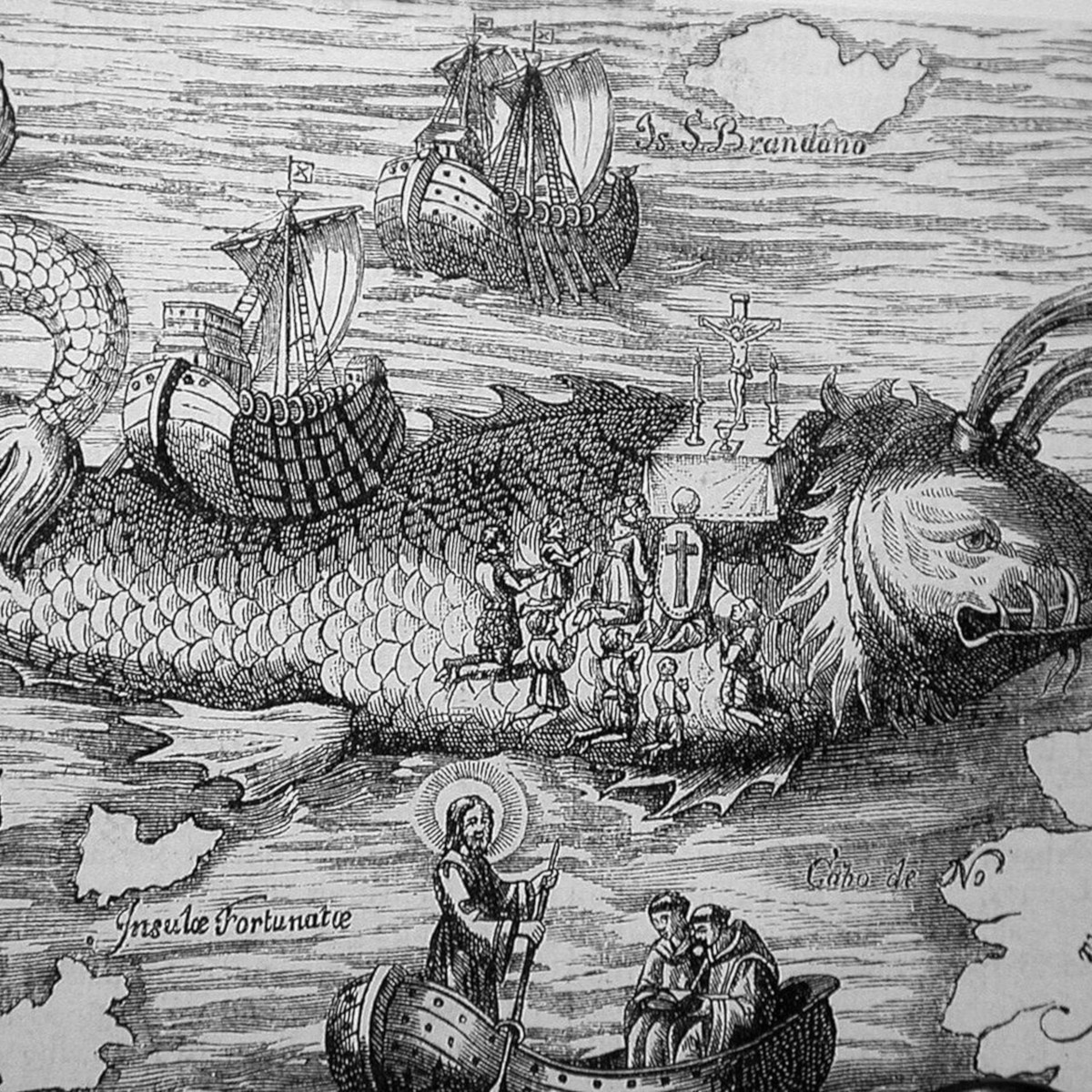Every visitor to the Canary Islands is sure that the Canary Islands consist of thirteen islands. The largest island is Tenerife, followed by Fuerteventura, Gran Canaria, Lanzarote, La Palma, La Gomera, El Hierro, La Graciosa, Alegranza, Monte Clara, Lobos, Roque del Este and Roque del Oeste. But did you know that there are fourteen islands?
The oldest record of the fourteenth Canary Island dates back to the 10th century in connection with Saint Brendan’s Traveler. The mention of the island is captured in the Latin text Navigatio Sancti Brendani Abbatis (“Cruise of Saint Brendan Abbot”). This saint is generally known to have taken adventure cruises. There are several legends about his life that may not be true. He is said to have been to the Canary Islands, even to discover America. This is probably also the origin of his name “Traveler”.
The first mention of the island
The island was named after Saint Brendan and was referred to as Saint Brendan’s Island, in Spanish Isla de San Borondon or Isla de Samborombon.

Saint Brendan claimed that he landed on the island in 512 AD with 14 monks with whom he celebrated mass. Initially planned to stay for 15 days, but eventually had to wait a year, during which the island remained hidden behind a dense curtain of fog. In his Navigatio Sancti Brendani Abbatis Monk Barino mentions this island as “paradise” in the Atlantic Ocean. He describes it as a densely forested mountainous island, in which the sun never set, in which there was a rich flora, trees gave birth to extraordinary fruit, flowed fresh water on it, and many birds sang in the trees.
Middle Ages
However, references to the island can be found in other records. In Planiferio de Ebstorf from 1234, Marcos Martinez writes about the “lost island discovered by St. Brendan ”. In Mapamundi de Hereford from 1275, the whole archipelago is referred to as the “Blessed Islands and the Island of St. Brendan “. Portuguese writer Luís Perdigão noted in the 15th century the interest of the King of Portugal for the island after one of the naval captains had informed Prince Henry the Navigator that he had found the island, but was not allowed to get under stormy marine conditions. Henry ordered him back, the captain sailed, but never returned.

In 1566 Hernán Pérez de Grado, the Supreme Judge of the Court of the Royal Canary Islands, ordered the judges of the islands of La Palma, El Hierro and La Gomera to examine information about the mysterious island. Abreu y Galindo also describes in his history an interview with a French adventurer who claims to have visited San Borondon. He was leaving there when a storm comming to the island and it took him a day to reach La Palma. In another report, Alonso de Espinosa, Governor of El Hierro, described an observation of the island of San Borondon northwest of El Hierro and leeward of the island of La Palma. He said 100 witnesses saw this phenomenon.
Juan de Abréu Galindo reports that the island of San Borondon, which is the eighth and last, the existence of which can be derived from observations, is located at 20 degrees and 30 minutes of latitude and eight leagues (40 kilometers) west of La Gomera. The longitude is given in coordinates based on the old measurement before the introduction of the Greenwich meridian.

The legend persists
In 1719 the Scottish monk Sigbert de Gembloux reported that he had seen the island. Likewise, Don Mateo Dacesta, mayor of Valverde on El Hierro in 1721, announced the observation of the island. As a result of this information in the same year Juan de Mur y Aguerre, the military governor of the Canary Islands, appointed a new commission of inquiry under the command of sea captain Gaspar Dominguez. However, it did not discover any new evidence of the existence of the island. The mention of the island dates back to 1772 in the notes of the Canarian historian Viera y Clavijo.
The island of San Borondón became part of the Canary Legends. It has become a myth to which the Canarians are very close because of their affection for supernatural things. They talk about a floating island that appears and disappears between thick fog and clouds. Historians like José Gregorio González and Professor Marcos Martínez Hernández, authors of Canarias Magica in article Mythic Islands in relation to the Canary Islands, are convinced that the island is not a physical reality. However, they consider this island to be so deeply rooted in a world of canary fantasy that it deserves to be considered as one of the Canary Islands as the fourteenth island.

(Photos: internet)
Did you like this article, was it useful to you? You can also support the creation of this website by sending any amount to ES08 0049 5735 1122 1616 5370, swift BSCHESMM. Include “Canaria Guide Support” in the note. Thank you for supporting.




thank you very much, great work, very good and easily explained, tremendous research of history.